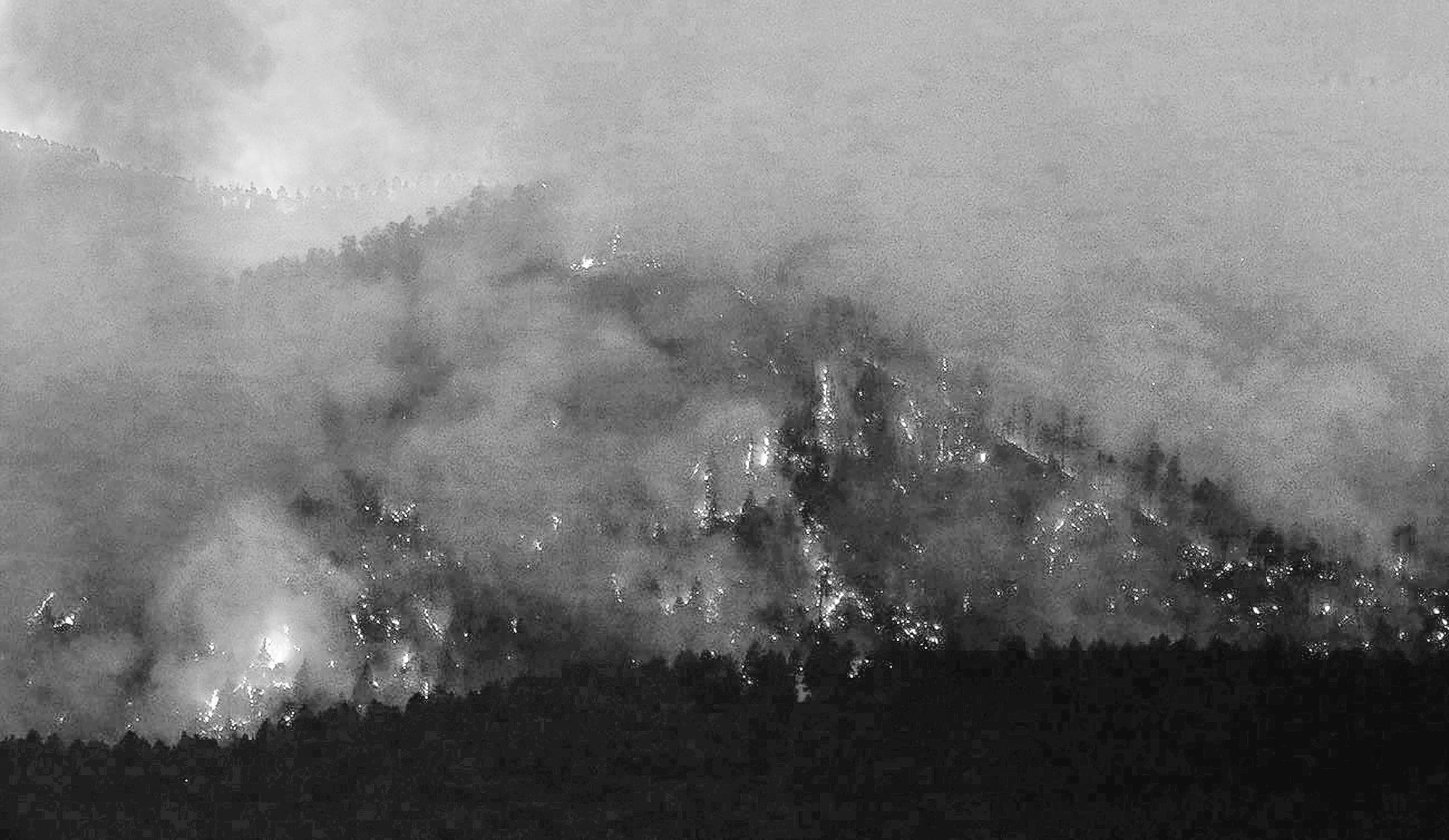
By COLLEEN SLEVIN
LINDSAY WHITEHURST
Associated Press
DENVER (AP) — A fast-moving brush fire destroyed eight homes in the Utah tourist town of Moab, while more than 3,000 people in Colorado and Wyoming fled multiple wildfires scorching the drought-stricken U.S. West on Wednesday. The blaze in Moab, known for its dramatic red rocks, started in a wooded area Tuesday night and quickly spread to homes over less than a square mile (kilometer), Police Chief Jim Winder said. He said the early investigation has ruled out natural causes for the blaze that ignited near a creek that is frequently used as a walkway in a largely blue-collar neighborhood.
It’s not near the tourist-heavy areas in the town known for its proximity to Arches and Canyonlands national parks. Moab resident Shane Tangren told the Salt Lake Tribune that he arrived home from work Tuesday evening to find flames nearby. He was trying to protect the house he’s lived in since he was 16 by wetting it down, but the wind shifted and sent the flames barreling right toward him. He fled. “I sat there and watched it burn to the ground,” Tangren, 55, told the newspaper. “Everything — photographs, birth certificates, memories — it’s all gone. My first car — that was a 1970 (Pontiac) GTO. Up in flames. I bought it when I was 15.” In Colorado’s mountains, residents have evacuated more than 1,300 houses — condos, apartments and pricey homes — in an area known for its ski resorts.
Firefighters, with help from aircraft, got a quick jump on the fire near Silverthorne after it was reported Tuesday and have managed to keep it from spreading beyond about 91 acres in heavy timber, including trees killed by pine beetles. Across the state, Colorado’s largest fire has burned about 43 square miles (111 square kilometers) over nearly two weeks. Residents could go back to about 180 homes no longer threatened at the northern edge of the fire Wednesday, but others remained out of more than 1,900 houses. The blaze about 13 miles (43 kilometers) north of Durango is in the Four Corners region where Colorado, New Mexico, Arizona and Utah meet and which is in the middle of a large swath of exceptional drought. Much of the U.S. West is experiencing some level of drought.
Colorado Gov. John Hickenlooper said the rapid response from emergency crews has helped prevent a repeat of devastating wildfires in 2012 and 2013. Years ago, he said fire departments were hesitant to commit resources to fighting every fire, and launching a coordinated response to a major blaze could take up to two days. Hickenlooper said better coordination has cut down on delays, and the state reimburses local departments for initial response costs, in an attempt to control a blaze before it can spread. “We learned a lot from the disasters, the fires we had in 2012 and 2013,” Hickenlooper told reporters. Meanwhile, a wildfire in Wyoming’s Medicine Bow National Forest doubled in size over 24 hours, burning about 8 square miles (21 square kilometers).
Nearly 400 seasonal and permanent homes have been evacuated because of the fire near the Colorado border. The situation was better in central Washington, where authorities lifted evacuation orders or warnings for about 50 residents as crews work to contain a wildfire burning grass and brush. Officials said one small outbuilding was lost but no injuries have been reported.



















